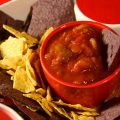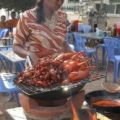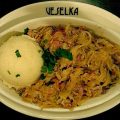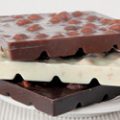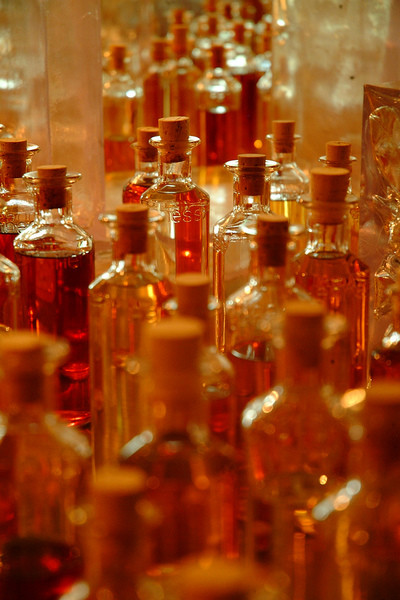 Alcoholic drink recipesEau-de-vie is a term infirst of all, cognac: this is how the producers of the drink call grape alcohol obtained as a result of double distillation and which is to become cognac. Fruit eaux-de-vie, like cognac, due to the peculiarities of production (double distillation), belongs to the brandy family, although they are often called liqueurs. But unlike liqueurs, eau-de-vie are fairly strong and dry-tasting colorless drinks. "Water of life" is made from whole fruits and berries - from 10 to 30 kg of "starting material" is consumed per liter of the drink. Fermented fruit juice is subjected to double distillation in Charentes copper cubes. The first stage is very easy: as much alcohol as possible is extracted from the wort. At the second stage, the product of the primary distillation will have to lose its “head” and “tail” (initial and final distillate yield). In the "wet" residue, the so-called "heart" is obtained, or directly eau-de-vie with a strength of 50-70%. After distillation, fruit eaux-de-vie, unlike grape brandies, which are sent to mature in oak barrels, mature for another six years in steel vats and only then are bottled. The main varieties of eau-de-vie include Williams Pear (from the pear of the same name), Prisoner Pear (“sharpened pear” - a bottle of brandy holds a whole fruit), Framboise sauvage (from wild raspberries harvested in the early morning), Kirsch (from small black South German cherries), Mirabel (from small sweet yellow plums with a red speck), Old Plum (the only plum eau-de-vie, ripening in oak barrels). In addition, the cunning French make eau-de-vie from almost any berry - elderberry, blueberry, mountain ash, strawberry, quince, hawthorn, black currant, rose hips. Due to a strange injustice in Russia, these drinks are little known and therefore not very popular. However, experts predict that the Moscow fashion for the "water of life" is not far off.
Alcoholic drink recipesEau-de-vie is a term infirst of all, cognac: this is how the producers of the drink call grape alcohol obtained as a result of double distillation and which is to become cognac. Fruit eaux-de-vie, like cognac, due to the peculiarities of production (double distillation), belongs to the brandy family, although they are often called liqueurs. But unlike liqueurs, eau-de-vie are fairly strong and dry-tasting colorless drinks. "Water of life" is made from whole fruits and berries - from 10 to 30 kg of "starting material" is consumed per liter of the drink. Fermented fruit juice is subjected to double distillation in Charentes copper cubes. The first stage is very easy: as much alcohol as possible is extracted from the wort. At the second stage, the product of the primary distillation will have to lose its “head” and “tail” (initial and final distillate yield). In the "wet" residue, the so-called "heart" is obtained, or directly eau-de-vie with a strength of 50-70%. After distillation, fruit eaux-de-vie, unlike grape brandies, which are sent to mature in oak barrels, mature for another six years in steel vats and only then are bottled. The main varieties of eau-de-vie include Williams Pear (from the pear of the same name), Prisoner Pear (“sharpened pear” - a bottle of brandy holds a whole fruit), Framboise sauvage (from wild raspberries harvested in the early morning), Kirsch (from small black South German cherries), Mirabel (from small sweet yellow plums with a red speck), Old Plum (the only plum eau-de-vie, ripening in oak barrels). In addition, the cunning French make eau-de-vie from almost any berry - elderberry, blueberry, mountain ash, strawberry, quince, hawthorn, black currant, rose hips. Due to a strange injustice in Russia, these drinks are little known and therefore not very popular. However, experts predict that the Moscow fashion for the "water of life" is not far off.

Making Money with Desserts: Success Stories
Yevhen Polishchuk (Fedutinov) instagram: @ evgeniyafedutinovavk.com / janeshomebaking– It all started with baking for relatives and friends. Gradually, she began uploading photos of her baking to Instagram, and orders began to come in. I made my first cake to order on October 13, 2014, and a little earlier I started making macarons and cupcakes. We can say that the business "found me myself", I am very [...]

Soups are cold recipes with photos
Cold cucumber soup with yogurt and lemonSorbet from La Taverna restaurant chef Alexander Zhurkina Photo: Getty Images Ingredients: Yoghurt without additives - 125 gCucumber - 150 gSorbet lemon / lime - 50 gCool shrimp - 24 gFresh ginger - 1 gLime lime - 5 gFresh orange juice - 5 gPetroshka - 1 g pink - 1 gCress salad - […]

barbeque kebab
Pork tenderloin glaze Photos: Dmitry Bayrak / dbstudio Cooking time: 20 minutes + time for pickling. Calorie content: 454 kcal per 1 serving. For 4 servings: 4 pork tenderloin (about 300 g each), 1 onion, 2 cloves of garlic, 1 tsp. lemon peel, 1 tsp. lemon juice, a pinch of ground cumin, coriander and turmeric, 1 tbsp. l vegetable [...]

Pierre Duacan: dietary recipes: Ducane diet
Beetroot Photo: Season'S, Luxury Hotels Representation You will need: · Boiled beets - 60 g · Fresh cucumbers - 20 g · Red radish - 20 g · Green onions - 10 g · Egg - 1 pcs · Mineral drinking water - 200 g · Salt - 1 g Ready: · Boil egg and beetroot. · Grind cucumbers, radishes and a part of beets. Putting everything [...]
